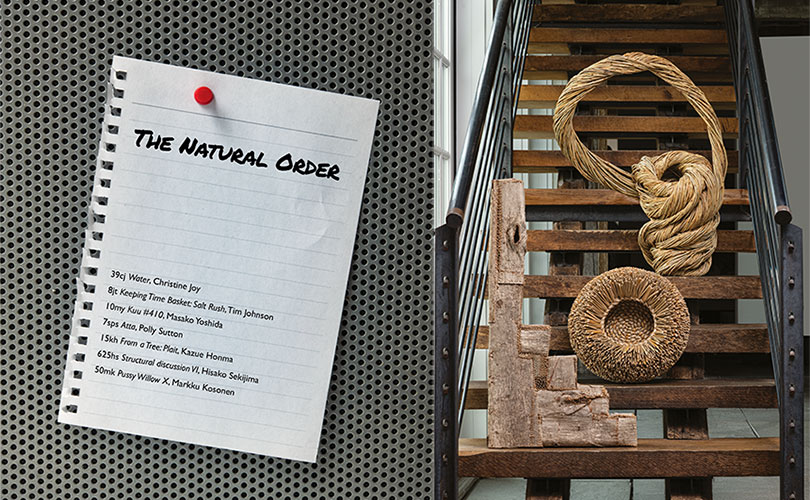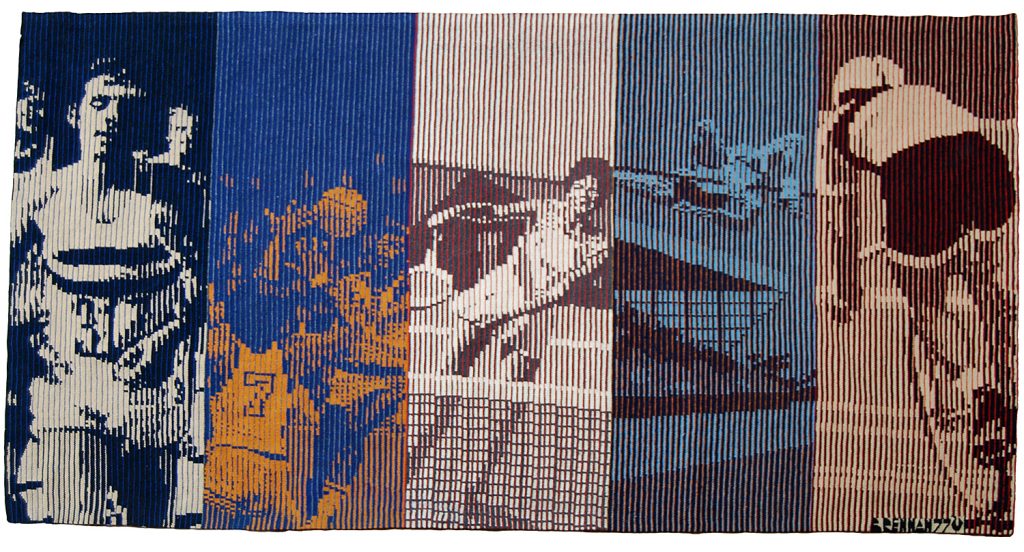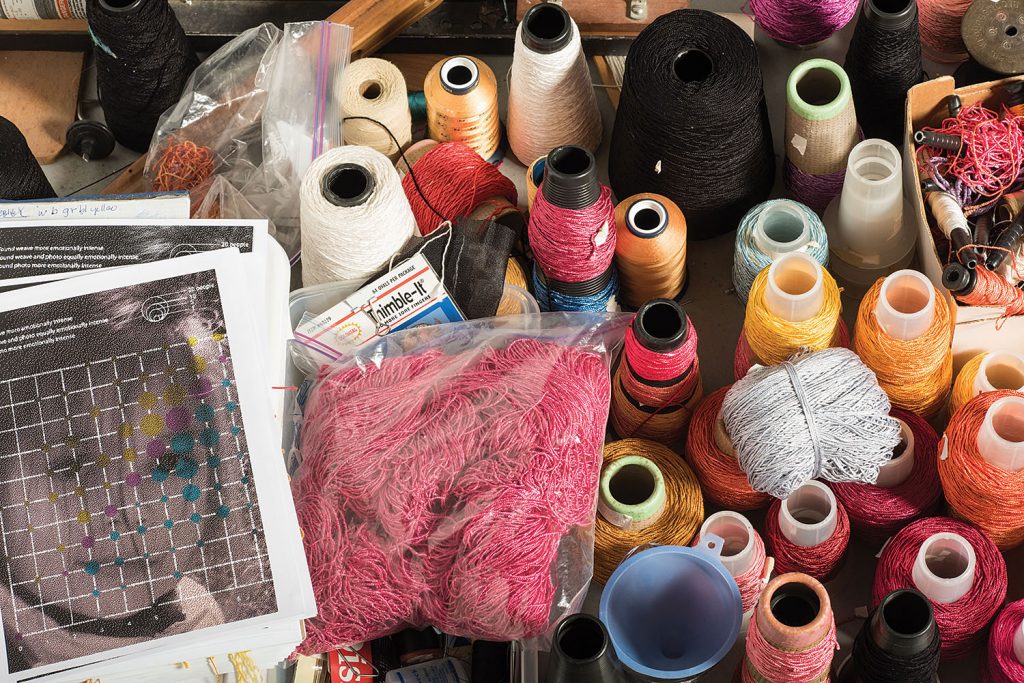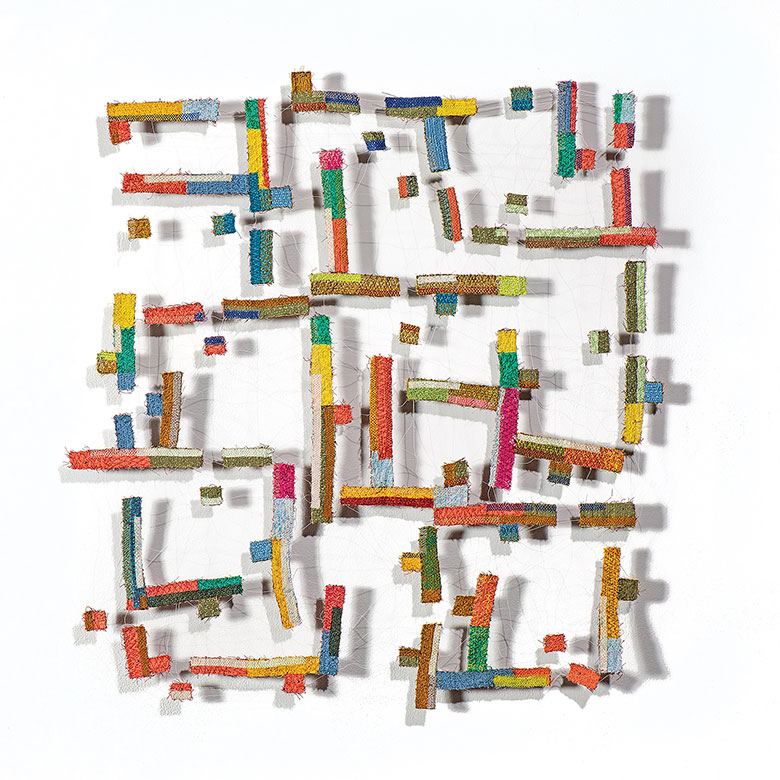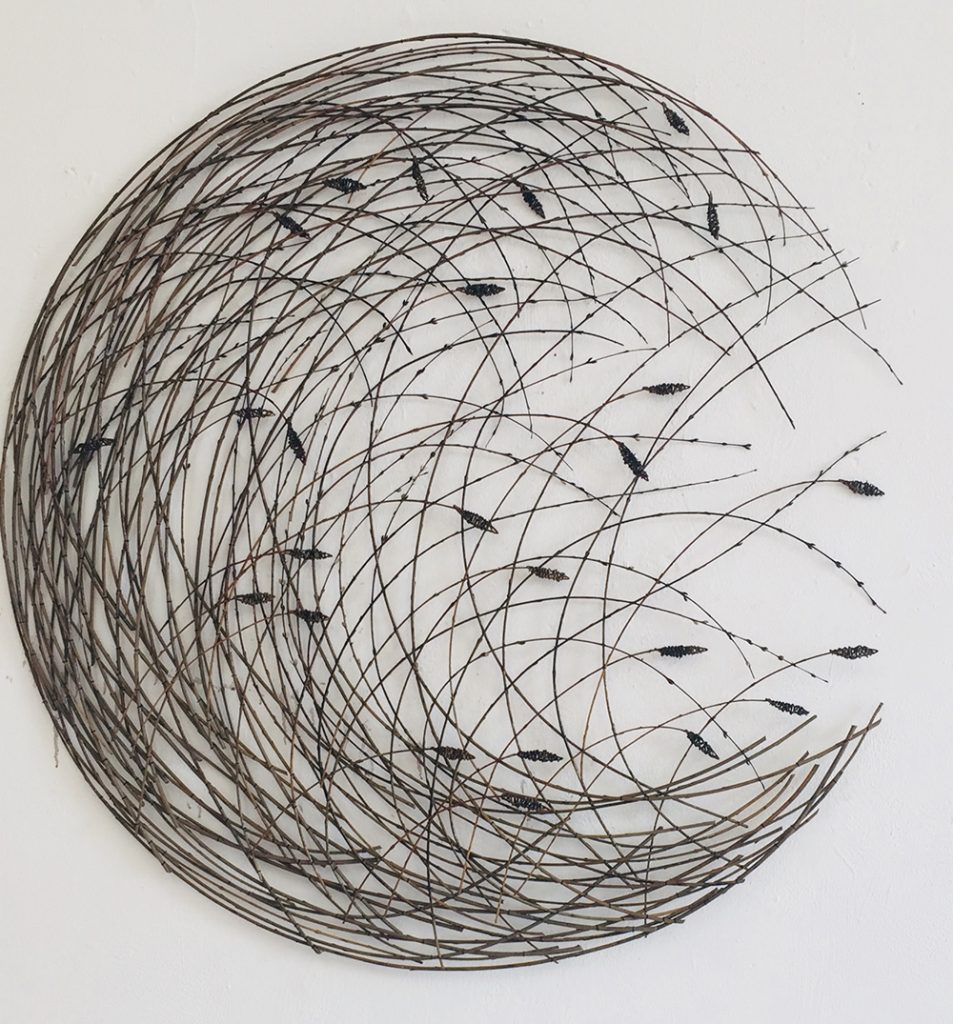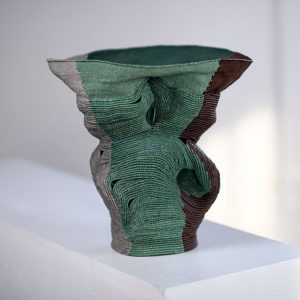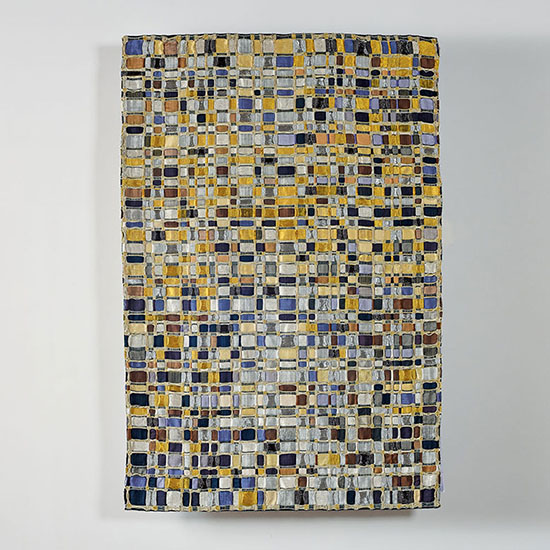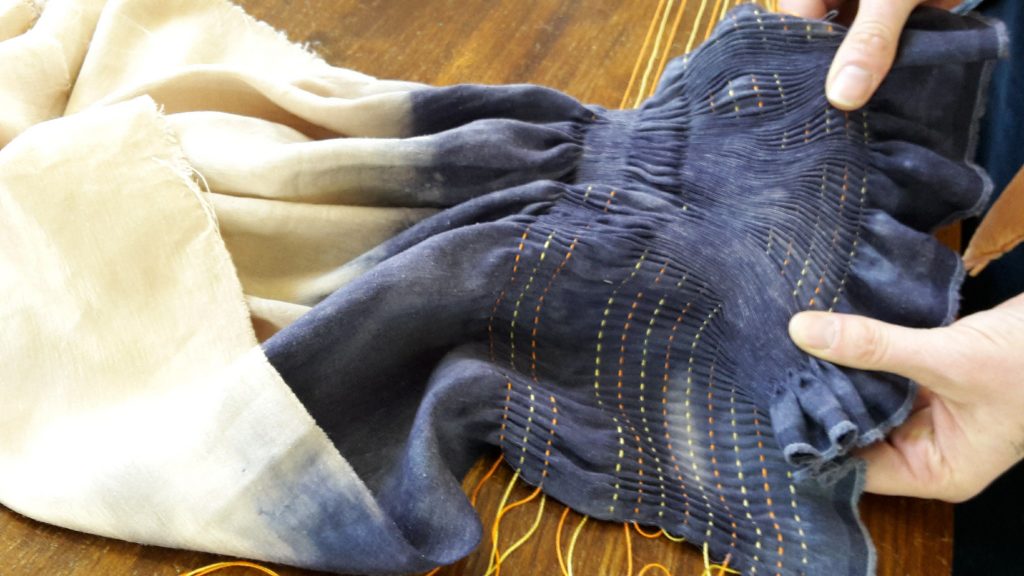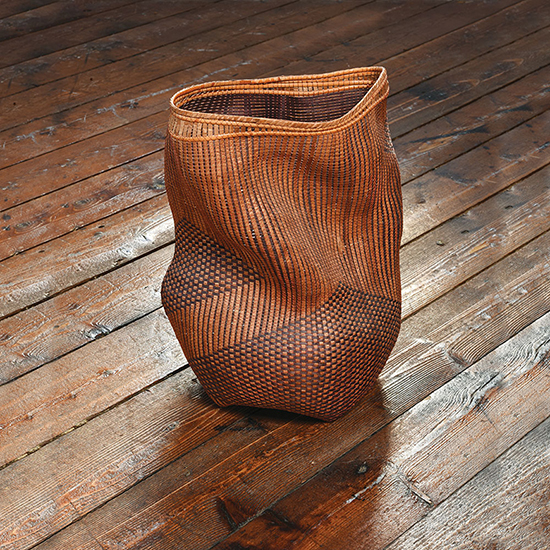As October comes to a close, we take a moment to reflect on the incredible artists and their works that have graced our New This Week series throughout the month. Our spotlight shone brightly on the creative minds of Tim Johnson, Gyöngy Laky, Glen Kaufman, Stéphanie Jacques, and Dona Look. Their unique talents and innovative approaches to art have left a lasting impression on our community.
But, that’s not all that October brought to browngrotta arts. We proudly launched the much-anticipated Vignettes exhibition, a harmonious fusion of three distinct showcases. Our in-person exhibition opened its doors, allowing art enthusiasts to experience the masterful craftsmanship of wood sculptor Dorothy Gill Barnes, the visionary weaving and surface design of Glen Kaufman, and the captivating diversity of An Abundance of Objects, featuring an array of baskets, ceramics, and sculptures crafted by over three dozen talented artists.
As we bid farewell to October, we invite you to join us in revisiting the highlights from our New This Week features and to explore the rich tapestry of Vignettes, now viewable on our website. At browngrotta arts, art and creativity continue to converge in a breathtaking display of talent and inspiration.
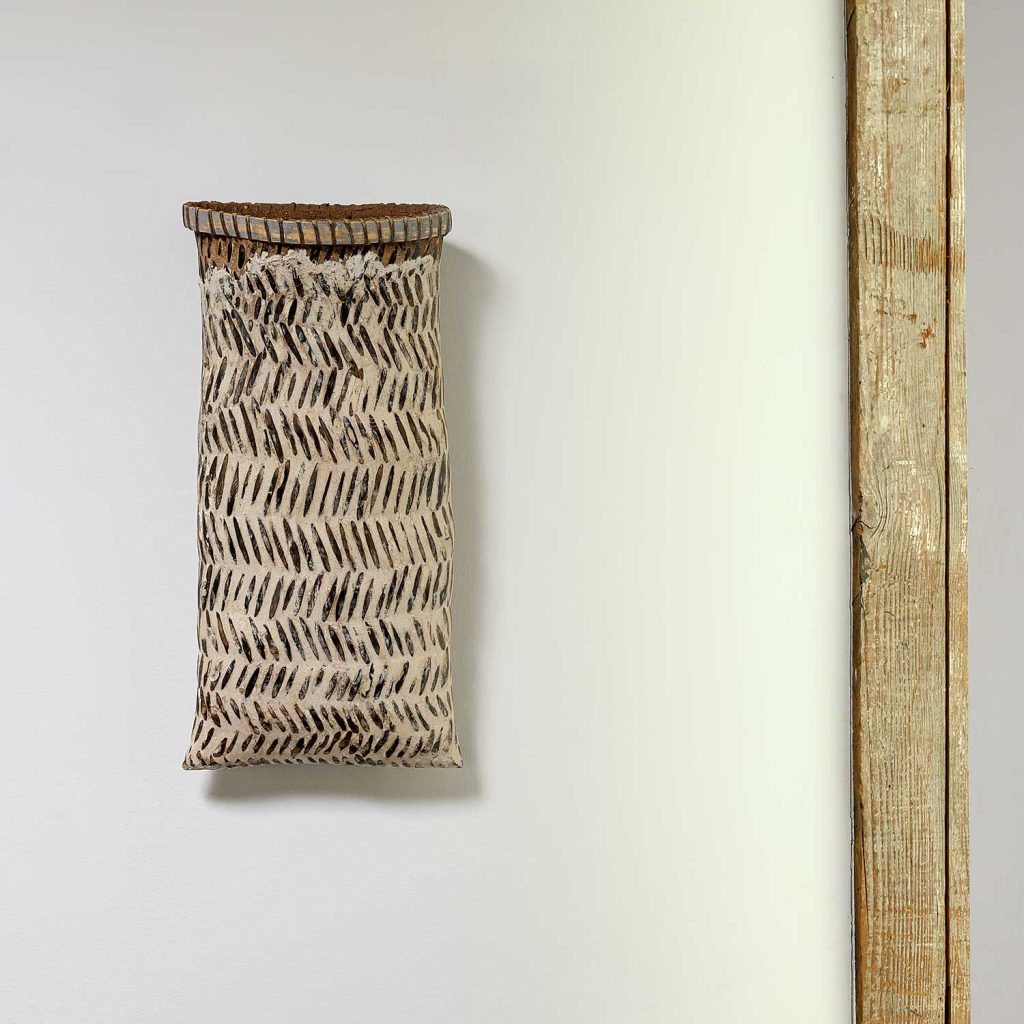
hemp twine, 20” x 10” x 6”, 2023. Photo by Tom Grotta.
Welcome to another edition of our New This Week series, where we embark on a journey through the world of contemporary art, one artist at a time. To kick off the month of October, we delve into the captivating creations of Tim Johnson, a skilled artist and basketmaker hailing from the United Kingdom.
With a rich history spanning nearly three decades, Tim Johnson has dedicated himself to exploring the intricate relationships between materials, place, nature, and culture. His artistic voyage is a fusion of traditional craftsmanship and innovative techniques, influenced by his extensive travels across the globe.
What sets Tim Johnson apart is his ability to breathe new life into humble materials and age-old practices. He blurs the lines between art and craft, inviting us to reconsider how we perceive both. Notably, you can find his work showcased in the current online version of the Vignettes exhibition at browngrotta arts, a testament to his lasting impact on the world of contemporary art.

As we look back on our features throughout October, it’s clear that Gyöngy Laky is a remarkable artist who has left an indelible mark on the world of sculpture. Her ability to blend tradition and innovation, creating sculptures that transcend boundaries, is nothing short of inspiring.
Laky’s influence extends far and wide, with her works featured in exhibitions spanning continents. Her early recognition for her linear sculptures, rooted in the architectural techniques of textile arts, marked the beginning of a remarkable career. Beyond gallery spaces, she has ventured into the realm of site-specific outdoor installations and contributed to land art projects in various corners of the globe, showcasing her adaptability and creativity.
We’re thrilled to have shared her captivating artwork with you this past month, and we invite you to explore more of her work, including her presence in the Vignettes exhibition, online November 22.
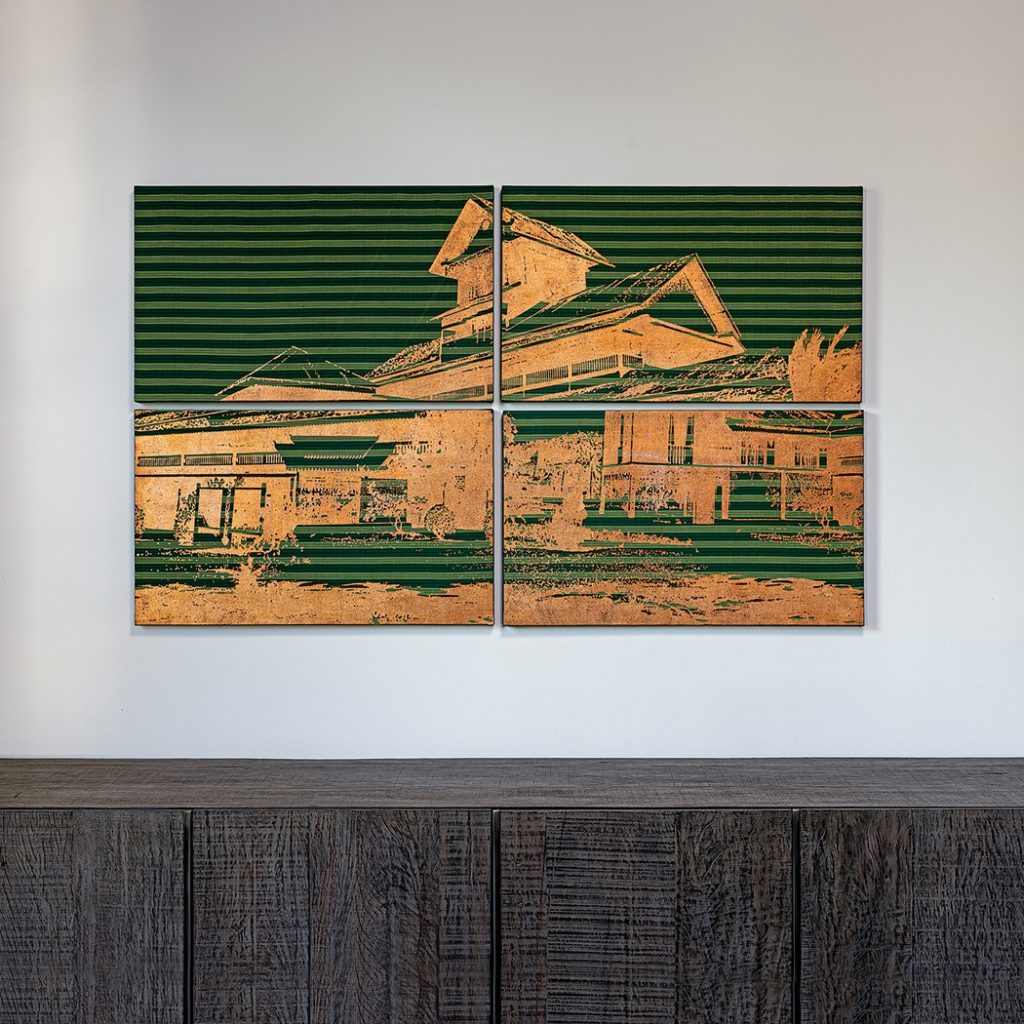
Up next, we were privileged to feature the remarkable works of the late, renowned artist Glen Kaufman. Kaufman’s artistic legacy, spanning over four remarkable decades, left an indelible mark on the world of art.
Kaufman’s artistic odyssey began with a foundation in textural weaving and macramé, setting the stage for a lifelong pursuit of creative discovery. His restless spirit and boundless imagination led him to traverse uncharted territories in the realm of surface design. With a fusion of traditional techniques and contemporary sensibilities, he crafted sculptural forms that challenged the boundaries of artistic expression.
In the later stages of his career, Kaufman’s work underwent a transformation, reflecting a profound connection with Japanese aesthetics and architecture. His pieces, adorned with intricate photo collages and the application of gold and silver leaf, demonstrated a deep appreciation for the beauty of Japan’s artistic heritage.
As we celebrated Kaufman’s contributions this past month, we were reminded that true artistry transcends the constraints of time and place. We’re honored to continue his legacy by featuring his artistry in our ongoing Vignettes exhibition, where his works continue to inspire and captivate.

Continuing our artistic journey through October, we cast our spotlight on Stéphanie Jacques, an artist whose work revolves around the art of connection. Jacques’s unique approach centers on weaving together elements that seemingly exist on opposite ends of the spectrum: hard and soft, old and new, valuable and trivial, conscious and unconscious, human and plant.
Her chosen mediums include wood, wicker, and clay, each one a canvas for her imaginative exploration. Basketry, cutting, and intricate assembly serve as both her tools and her muse, propelling her to discover novel solutions to age-old questions.
With each sculpture and installation, she delves deeper into the notion of connection, weaving together the threads of life in her own unique way. And yes, you’ll also find her work thoughtfully showcased in our ongoing Vignettes exhibition, a testament to her exceptional talent and boundless creativity.

And last, but certainly not least, we highlighted the work of artist Dona Look. Look is a skilled basket maker from the beautiful landscapes of Wisconsin. Look’s art is deeply connected to the nature that surrounds her. She starts her creative process by gathering bark from the region’s birch trees. With this simple yet extraordinary material, she weaves intricate baskets, capturing the essence of the woodlands in her craft. To hold everything together, she uses silk thread, turning these natural elements into stunning works of art.
We were delighted to feature this talented artist’s work in the ongoing Vignettes exhibition, where her creations shine alongside those of other exceptional artists.
October has been more than just a showcase of talent; it’s been a month of expansion and connection. The launch of our Vignettes exhibition, both in-person and online, has allowed us to bridge physical and digital spaces, bringing art enthusiasts closer to the remarkable works of Dorothy Gill Barnes, Glen Kaufman, and a myriad of other gifted artists. If you want to learn more about the artists and artwork in Vignettes: one venue; three exhibitions, join our Zoom presentation on November 17 at 7 pm EST: Art on the Rocks: an exhibition talkthrough with spirits!
As we bid farewell to this month, we extend our gratitude to our dedicated community of artists, collectors, and art lovers. We look forward to seeing what November brings!



